The purpose of the denouncement
Sanatan Vaidik Dharma (Hindu Dharma) which is in existence since the origin of the world, The Holy Scriptures of the Hindus, Deities, methods of ritualistic worship, spirituality are often denigratory commented by others. Some people find these comments truthful, whereas many others feel such comments are venomous; despite of this it becomes impossible to denounce such comments. Some intellectuals and scholars too unknowingly express such thoughts.
By offering no denouncement to such inappropriate thoughts and denigratory comments, the faith of Hindus is shaken, and it results in a loss of Dharma. In order to stop such loss to Dharma, and to obtain intellectual strength, appropriate denouncements to such denigratory comments are given in this Holy text.
1. Incorrect publicity and its denouncement on topic of origin of Dharma, and the time period of its formation
1A. They say that the Dharma-grantha are written in Kaliyug (The era of strife) !
Incorrect thoughts
1. One view of thought in reference to the time period of compilation of some Dharmagranth
A. Vaidik Samhita, Brahman granth and some Upanishads ( 5000 B.C. to 1000 B.C.)
B. Some Upanishads, Nirukta (800 B.C. to 500 B.C.)
C. Important Shrautsutre and some Guhyasutre (600 B.C. to 400 B.C.)
D. Dharmasutre, Gruhyasutre and Grammer compositions of Panini (600 B.C. to 300 B.C.)
E. Jaimini’s Purvamemamsasutra (500 B.C. to 200 B.C.)
F. Kautilya’s Economics and the Grand Commentary of Patanjali (300 B.C. to 100 B.C.)
G. Manusmruti, Yadnyavalkyasmruti (200 B.C. to 300 B.C.)
H. Naradsmruti and some Puranas (100 A.D. to 400 A.D.)
I. Other Smrutis and some Puranas (600 A.D. to 900 A.D.)
2. Second thought in reference to the time period of compilation of the Smruti’s
A. Gautam, Apstamb, Baudhayan Dharmasutra’s, and Manusmruti (Earlier than 600 A.D. to 100 A.D.)
B. Smrutis of Yadnyavalkya, Parashar, Narada and others (100 A.D. to 200 A.D.)
C. Other Smrutis (200 A.D. to 800 A.D.)
D. Comments and essays on Smrutis and compilations on similar Holy texts (800 A.D. to 1800 A.D.)
Note- The years mentioned in the brackets represent the time period during which the respective Holy texts were compiled.
In view of historians, all the writers of Smrutis are of Kaliyug; but the essay composer has taken for granted that all of them belong previous to Kaliyug era.
Denouncement
वेदोऽखिलो धर्ममूलम् । – मनुस्मृति, अध्याय २, श्लोक ८
Meaning : All Vedas are root of the Dharma.
यो ब्रह्माणं विदधाति पूर्वं यो वै वेदांश्च प्रहिणोति तस्मै । – श्वेताश्वतरोपनिषद्, अध्याय ६, वाक्य १८
Meaning : At the time of origin of the Universe, God has made Hiranyagarbha with various capabilities, and the famous Atman gives Hiranyagarbha various sciences such as Rugved.
1. ‘I surrender to the one who created Brahmadev and gifted him with the Vedas.. This means that the Vedas were in existence even before the origin of the Universe. Lord Shankar says that the entire Universe is evolved from the Vedas. Vedas are the primitive essence of the Universe. If we look at the ancient scientific calculations of Kalpas, then it is 42,03,35,99,994 years since the origin of the Universe. ‘Entire Vedas came into existence before the existence of the Universe’. This is our belief. Maharshi Vyaas has processed the Vedas during last Dwaparyuga, this means He divided Vedas in Rugved, Yajurved, Samved and Atharvaved. The end of Dwaparyug and today’s Kaliyug started approximately 5050 years ago. This proves that the division of Rugved, Yajurved, Samved and Atharvaved took place 5000 years ago.’ – Gurudev Dr. Kateswamiji (1)
2. Vedas on verge of extinction after the cycle of the four yugas and the Saptarishis descend to re-write Vedas : ‘After every cycle of the four yugas, in other words after Satya, Treta, Dwapar and Kaliyug, Vedas come on the verge of extinction. During this time, the Saptarishis descend down and make Vedas again.’ – Vaidacharya (Dr.) Vasant Balaji Athavale, Chembur, Mumbai. (Year 1987)
3. ‘The Vedas till Puranas, all these Holy texts were written again and again in every yuga, hence all of them do not have any time of origin.’ – H.H. Dr. Jayant Athavale
1 B. They say, Yadnyavalkya has composed the addendum after composing the Vedas
Denigratory comments
‘Yadnyavalkya has composed the addendum after composing the Vedas.’ – Modern
Denouncement
It is untruth that the addendum was composed after the composition of the Vedas; Yadnyavalkya has received the addendum along with the Vedas as grace from the Sun deity: ‘In the Mahabharat, Shantiparva has described this as,
प्रतिष्ठास्यति ते वेदः सखिलः सोत्तरो द्विज ।
कृत्स्नं शतपथं चैव प्रणेष्यसि द्विजर्षभ ।।
-Mahabharat, Shantiparva, Chapter 306, Verse 10
Meaning : Oh’ great Sage Yadnyavalkya, the Vedas will be established in you along with the addendum and rejoinders, and Oh’ great Sage! You will give discourses on the entire Holy texts made for the Brahmins.
Lord Suryanarayan became delighted due to the rigorous penance of Yadnyavalkya and said to him, “Shri Saraswati will enter in your body in form of speech. ‘Then he encouraged Vedvani Saraswati to enter in the body of Yadnyavalkya. At that time Yadnyavalkya opened his mouth. Here it becomes clear that, Yadnyavalkya obtained the Vedas along with its addendums from the Lord Bhaskara. In this way, Yadnyavalkya did the first discourse on ‘Shatpath Brahman’ a Holy text composed of 100 chapters. This event is mentioned in the Mahabharat. Yadnyavalkya obtained 15 branches of Shukra Yajurved only due to the grace of Lord Bhaskar.’ Hence, the ideas such as addendums etc. were composed later is nothing but untruth.
-Gurudev Dr. Kateswamiji (2)
2. Thoughts that give rise to a doubt on the Vedas
2A. The denigratory commentators by raising doubt on the Vedas, display low standards of their own intellect !
Denigratory comment
‘The Rigved is a huge Holy text, whereas the Shukla Yajurved is a small Holy text.’ – A modern Intellectual
Denouncement
‘These modern people even stretch the time period scales to its limits. This is totally wrong. Ved is one and single, it is Apurushya (not made by any human). Sage Vyas has divided it just for the sake of convenience. Hence there is no room for an idea of superior or inferior; but the denigratory commentators by raising doubt on the Vedas, display low standards of their own intellect!
-Gurudev Dr. Kateswamiji (3)
2B. P.L Deshpande, a creative writer and author gives statements which are treacherous to Dharma !
1. Says, the Holy Sages who wrote Holy texts on Dharma had some shortcomings, hence similar to other Holy texts, the Holy texts on Dharma are filled with inappropriate views!
Denigratory comments
‘The Holy texts on Dharma are filled with mistakes in their views. Similar to the other four man made Holy texts, all of the Holy texts on Dharma are filled with some appropriate and some inappropriate views, we have to read them by taking such belief as granted. The sages who wrote the Holy texts on Dharma were having some shortcomings, it does not matter how great they were, as they were humans. And they were not Avtars of the God. They were susceptible to mistakes. Even if their greatness was acknowledged, in their respective era’s, they still had shortcomings, this should be kept in mind.’ – P.L. Deshpande
Denouncement
1. The Holy texts on Dharma as well as the Holy Sages did not had any shortcomings, and the Holy texts on Dharma still continue to provide guidance: P.L. Deshpande says, ‘The Holy texts have mistakes’; how many Holy texts have been studied by P.L. Deshpande? The Holy Sages who did penance for thousands of years have done a through and subtly thoughtful study, and then presented the spiritual and social laws (which are proven by experiments). Without even studying these, P.L. Deshpande says, ‘The Holy sages can do mistakes’; by such deeds P.L. Deshpande is doing nothing but a big gossip with a small mouth. History says that, the greatness of numerous Saints who have studied the Holy texts on Dharma and followed its teachings in their life, have been accepted by the society. Now days, there are a lot of people who reject the ideal path shown by our Holy texts on Dharma and blindly follow the materialistic culture from the west; in-spite of having all the wealth and material pleasures, they go in a state of depression and commit suicide or fall prey to addictions. Does P.L. Deshpande want such life style?
2. P.L. Deshpande who believes that ‘the Holy Sages have shortcomings’, ironically feel Jyotiba Phule as an exception, this is just his ignorance: Dear P.L. Sir, you give excuse to Jyotiba Phule. On one hand you say, ‘The creative authors such as Manu and the God Himself who has told Gita is susceptible to mistakes or has mistakes’, then how can you excuse Jyotiba Phule who passed away 100 years ago?. You further say, ‘The texts of Jyotiba, can’t be judged for appropriateness and mistakes, and his texts are eternal’, isn’t this your ignorance?’
– Gurudev Dr. Kateswamiji (4)
3. They say, ‘Bharat’ and ‘Mahabharat’ are two different Holy texts !
Denigratory comments
‘First ‘Bharat’ was compiled, thereafter ‘Mahabharat’ came into existence. Between the time period of these Holy texts, ‘Ramayan’ took place.’ – Western researchers of ancient knowledge and the lousy Indian intellectuals
Denouncement
‘Sage Vyas has first compiled ‘Bharat’ and thereafter compiled ‘Mahabharat’, this is totally wrong. Dwaipayan Sage Vyas has compiled only the ‘Mahabharat’. In the adiparva of Mahabharat, it is clearly stated that, Sage Vyas has compiled the ‘Mahabharat’ along with its 100000 verses and anecdotes, and later when he compiled a conjugation of 24 thousand verses excluding anecdotes, the intellectuals termed it as ‘Bharat’. (Adiparva, Chapter 1, Verse 101 to 104)
In the chapter 120 of Adiparva, elaboration on the words ‘Bharat’ and ‘Mahabharat’ is mentioned. The history of the Kauravas and the Pandavas excluding the anecdotes is of 24 thousand verses and the conjugation including the anecdotes and 100000 verses is termed as the ‘Mahabharat’. This is referred in headmaster Anant Damodar Athavale known as Swami Varadanand Bharati’s text, ‘The real view of the Mahabharat’.
Hence it is not worth to say ‘Ramayan took place between Bharat and Mahabharat’. In the vanparva of the Mahabharata, the anecdote of Lord Shri Ram is mentioned. There are many events and characters of Ramayan which are mentioned in it along with the information on Sage Valmiki’s Ramayan. Ironically in the Ramayan, there are no directions and characters of the Mahabharat, and it does not give any reference of the Mahabharat.’
In order to gain publicity and fame, the western researchers of ancient knowledge and lousy Indian intellectuals keep aside the truth and use their own brain/intellect to prove something which does not exist While trying to do an autopsy of the truth they just show off their wisdom (actually show off their idiotism).’
-Gurudev Dr. Kateswamiji (5)
4. Inappropriate thoughts in reference to Shrimadbhagwadgita
4A. They say, Shrikrushna has not indoctrinated Arjuna on Kurukshetra
Denigratory comment
‘Shrimadbhagwadgita was not indoctrinated at the battlefield of the Kurukshetra, and it was told independently.’
Denouncement
‘Self-made theories were imposed by some modern philosophers such as Gandhi, Vinoba, Dr. G. Shri Khair, Dr. Pendse and other doctorate intellectuals; but for them, an excerpt of conversation between ShriKrushna and Arjun taken from the Ashwamedikparva is enough to exhibit the truth.
1. In the Ashwamedikparva of Mahabharata, Arjun says to Shrikrushna, “Oh’ the one with the mighty arms, and son of Devaki, please tell me once again the Knowledge of Gita which you have already told me in the battlefield of Kurukshetra just before the war.” (Ashwamedikaparva, Chapter 16, Verse 5 to 7), Shrikrushna says, ‘Oh Arjuna, the one with the mighty arms, earlier at the time of the war, I indoctrinated you with the same message; therefore you abide-in yourself on that.’ (Ashwamedhikparva, Chapter 51, Verse 49)
2. Gita was indoctrinated on the battlefield; to make it clear, some reference of verses in Gita are mentioned below.
A. Lord Shrikrushna when indoctrinated Gita to Arjuna said, ‘They are no longer our near and dear ones, and they are standing in front of us as enemies to compete with us. In such circumstances, to exhibit dearness for them is idiotism’. Similarly He told Arjun, ‘The only goal of life is to be one with God, along with the various paths to reach Him.’
B. In the Chapter 18, verse 61, Lord Shrikrushna tells Arjun, ‘While you have the presence of God in your body, and at that place you have created your own existence, this is the reason for this doubt. You dissolve your own existence and surrender to me.’ Thereafter the doubts of Arjuna vanished away, and he unconditionally surrendered to Lord Shrikrishna and got ready to fight the war.
This stands as a reference that just before the war, Lord ShriKrushna indoctrinated Arjuna on Gita, this is undoubtedly true as the shining sun. In the event of the war, Gita was told, this is clearly mentioned in the Ashwamedikparva, and this also clearly shows that those who think themselves intellectuals have indulged in such low level denigratory comments.’
– Gurudev Dr. Kateswamiji (6)
4B. Dnyaneshwari inspite being a commentary on Shrimadbhagwadgita, intellectuals decide that it is greater than Gita !
`भगवद्गीतेपेक्षाही ज्ञानेश्वरी मोठी (महान) आहे.’ – एक आधुनिक विद्वान् ( A modern intellectual)
Denouncement
‘This author has raised a resistance/conflict against Ved, Purans, and Gita. Saint Dnyaneshwar Maharaj intensely praised the greatness of Shrutimauli and Puran. His heart is full of gratitude by the gratefulness of Sage Vyas. The articles of this author indicate a treacherous plot to show the Vedas, Puran, and Gita as inferior. Hence the honour of Dnyaneshwar and Dnyaneshwari will not rise but fall. Saint Dnyaneshwar Maharaj advocates the greatness of Lord Shrikrushna and Bhagwadgita in each and every page. Hence in order to uplift the society he made a commentary on Gita. ‘Hence it is not appropriate to say ‘Dnyaneshwari is greater than Bhagwadgita’, and it is a symptom of ignorance. – Gurudev Dr. Kateswamiji (7)
5. Some self-styled denigratory commentators on the Holy texts on Dharma
5A. Self-styled modern intellectual denigratory commentators who define their own meaning
Denigratory comments
‘In the above verse, ‘‘दुर्गाया गृहीतः करः’, means ‘(The King Harsha) won that part of land and took water from Durga, means ‘Married to Durga.’ – A modern intellectual denigratory commentator
Denouncement
‘The implied meaning of the above verse is that the King Harsha attacked Nepal and won that part of land. Hence, the era of Harsha started at that place. ‘Ironically, in ‘Harshacharitram’ (biography of King Harsha), there is no description of any event where King Harsha has married to a daughter of the Himalayas. Banbhatta further says in his ‘Harshacharitram’, ‘Durgaya means ‘King Harsha went to a beautiful natural landscape which is a difficult terrain with snowy mountaineous region (towards Nepal) and collected taxes. This shows that the modern lousy intellectuals give rise to doubt by blundering the implied meaning.’ (?)
References
(The values in the brackets are reference numbers.)
Ghangarjit (Note 1)
(1) January 2010 (2) November 2008 (4) January 2008
(5) October 2007 (6) April 2008 (7) December 2009
Weekly Sanatan Chintan (Note 1)
(3) 15 May 2008
Reference not available (?)
Note 1 – Publisher- Gurudev Dr. Kateswamiji Samasta Vangmaya Prakashan
Publishing Place: Gurudev Ashram, Main Post Vadalamahadev, Taluka Shrirampur, District Ahmednagar, Maharashtra 413739

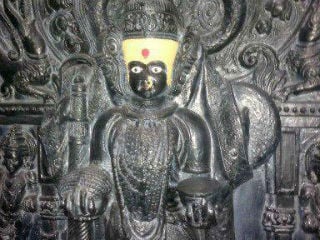 Restoration of Gods idol through chemical process
Restoration of Gods idol through chemical process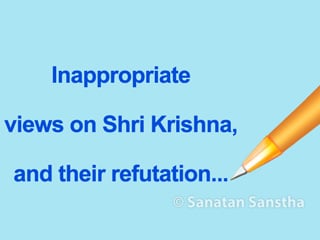 Shriram and Shri Krishna are not God’s but humans !
Shriram and Shri Krishna are not God’s but humans !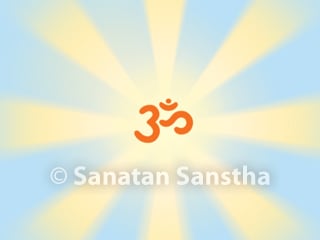 Misconceptions and its refutation : There are 330 million Hindu Gods.
Misconceptions and its refutation : There are 330 million Hindu Gods.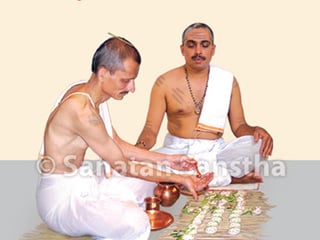 Criticism of 'Shraddha' ritual by 'Intellectuals' and its refutation
Criticism of 'Shraddha' ritual by 'Intellectuals' and its refutation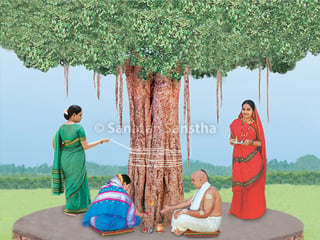 Criticism about ‘Vowed religious observances (Vrat)’ and their prohibition
Criticism about ‘Vowed religious observances (Vrat)’ and their prohibition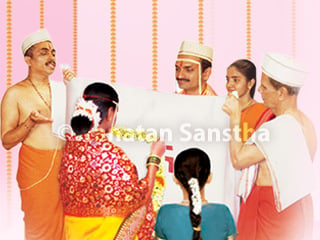 Refutation of the criticism about ‘the sacrament of marriage’
Refutation of the criticism about ‘the sacrament of marriage’